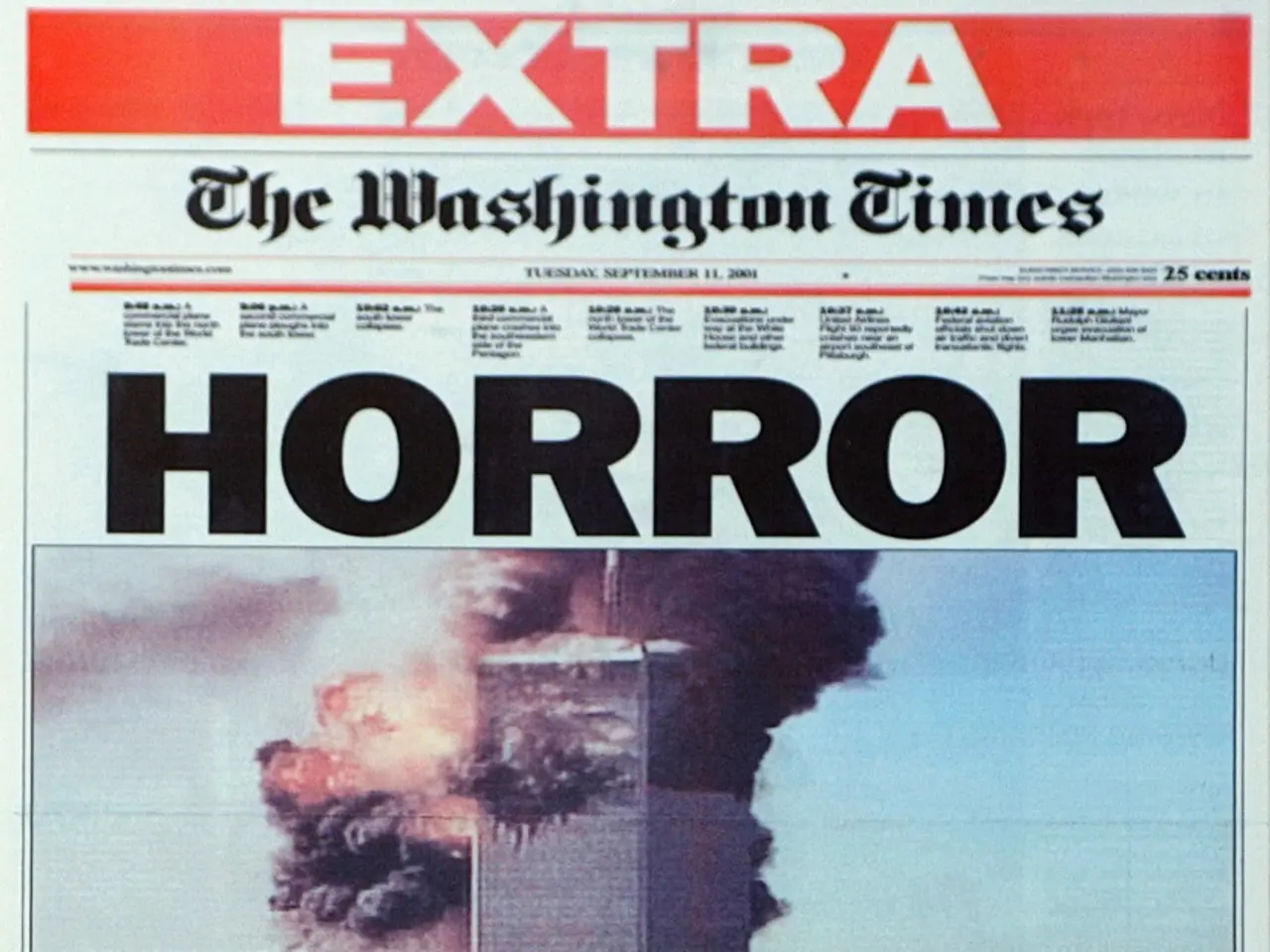Stock market's Dow Jones set for unprecedented opening, spurred by banking sector's eagerness for interest rate reduction
The Dow Jones Industrial Average (DJIA) is inching closer to record highs, defying signs of underlying economic turbulence. In the past month, the index has flirted with hitting a new peak but has yet to close at a record high.
This week, the DJIA received a boost after the Consumer Price Index data for July showed headline annual inflation rose in line with expectations. As a result, stocks soared, and Dow Jones futures jumped 290 points, or 0.62%. S&P 500 futures rose 0.1%, while Nasdaq Composite futures fell 0.1%.
The Dow has surged almost 20% since hitting a low point in early April. To hit an intraday record high, the index needs a gain of roughly 163 points, or 0.36%, and to close at a record high, it needs to finish with a gain of 103 points, or 0.23%.
The market's resilience can be attributed to several factors. Investor optimism and a forward-looking nature are key drivers, as stock markets often price in future expectations rather than current conditions. Investors may be anticipating a strong economic recovery, improved corporate earnings, or successful resolution of current issues, leading them to buy stocks even when present economic data looks shaky.
Central bank policies also play a significant role. Accommodative monetary policies, such as low interest rates and quantitative easing by the Federal Reserve, provide liquidity and support to equity markets. Easy access to cheap capital encourages investment in stocks, pushing the index higher.
Sector rotation and tech influence are additional factors. Certain sectors, especially technology and consumer discretionary, can drive indices like the DJIA up. Even if some parts of the economy show weakness, strong performance in influential companies can lift the average.
Market sentiment and behavioral factors are also crucial. Retail and institutional investor sentiment, driven by factors like stimulus packages, vaccine rollouts, or geopolitical developments, can lead to bullish behavior irrespective of economic turbulence.
However, the faster-than-expected rise in producer prices has dented hopes for certainty about Fed rate cuts in September. Despite this, the market has remained buoyed by a strong corporate earnings season and undeterred investor enthusiasm about AI.
The Dow initially included 12 companies in 1896 and expanded to 30 companies in 1928. In November, Nvidia was added to the Dow, replacing Intel. Notably, the Dow provides less of a scope of the market than the broader S&P 500, but it's an iconic symbol of the US stock market.
This week, Japan's Nikkei 225 and the MSCI all-country world index also hit all-time highs. On Friday, UnitedHealth shares surged, helping push the Dow to a record high. UnitedHealth shares, a significant component of the Dow, jumped 12.6% during premarket trading.
Volatility in the market has largely dissipated. Wall Street's fear gauge, the CBOE Volatility Index, this week hit its lowest level this year. The S&P and Nasdaq hit record highs on June 27 and have since climbed further into record high territory.
As the Dow continues to approach record highs, it remains to be seen whether it can maintain this momentum in the face of ongoing economic challenges.
Read also:
- AI Inspection Company, Zeitview, Secures $60 Million Funding for Expansion
- Future of Payments: If the U.S. regulates stablecoins through the GENIUS Act, according to Matt Hougan
- Ongoing trade friction as the American administration levies fresh import taxes on goods arriving from China
- High-Performance McLaren Automobile: McLaren Speedtail







